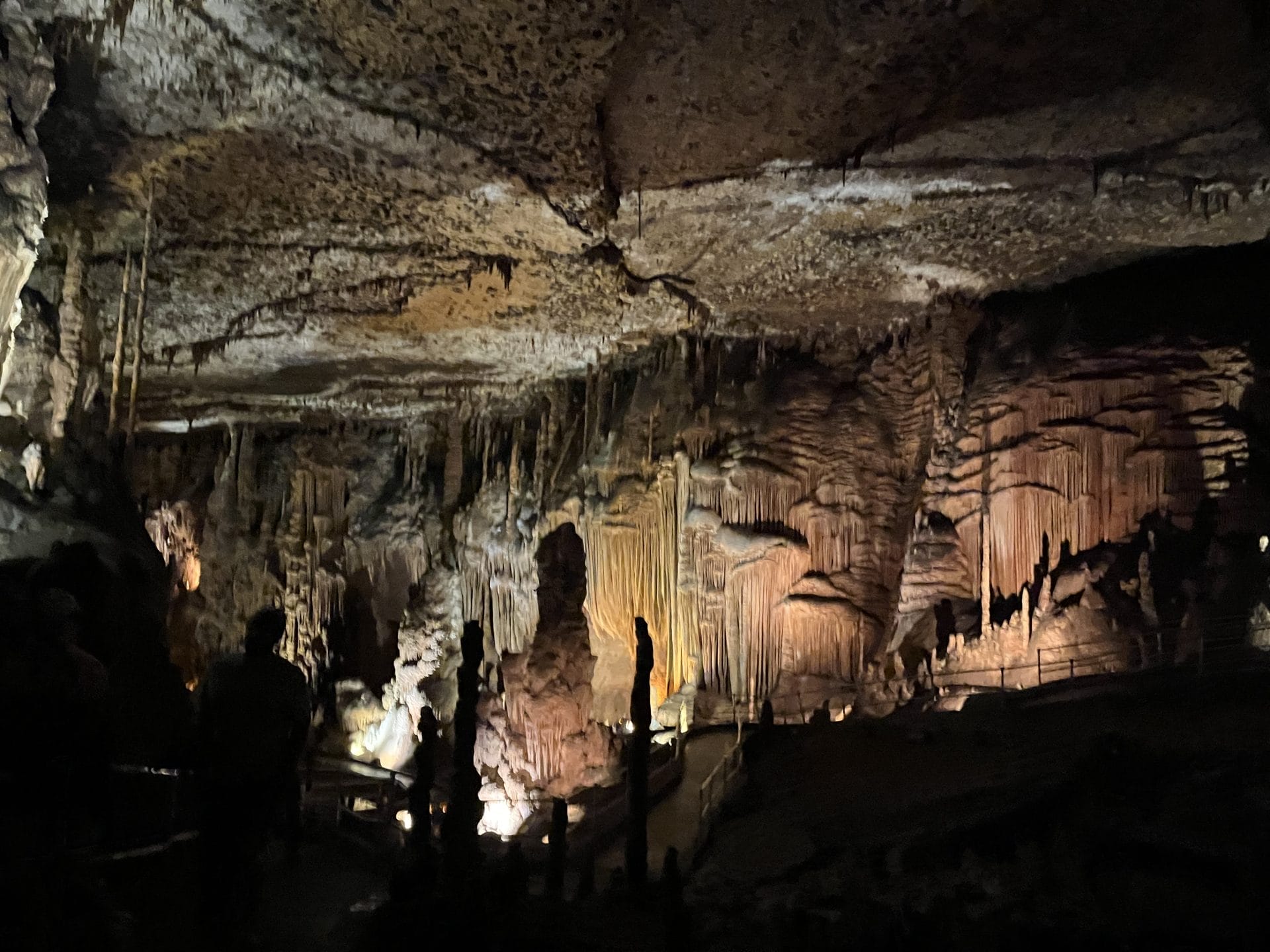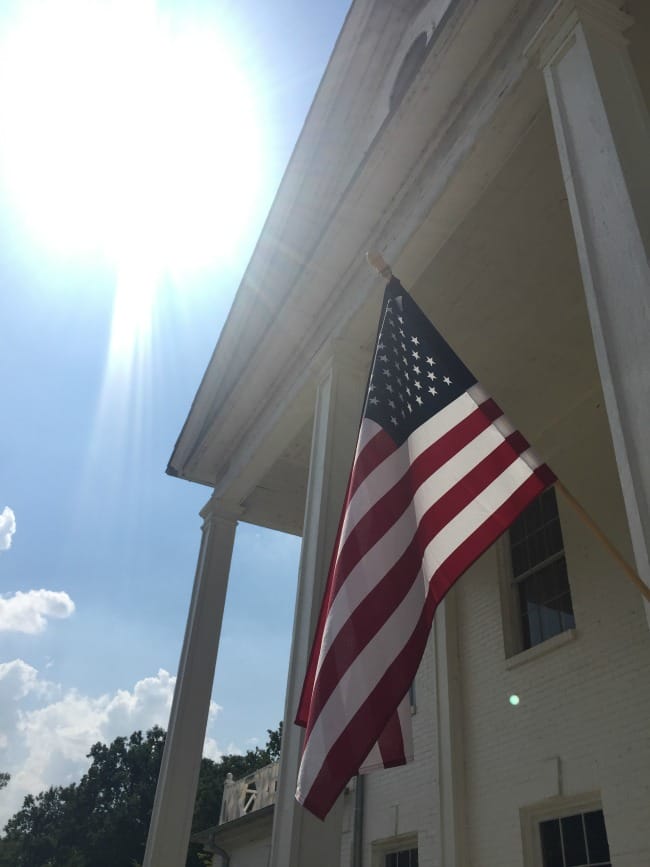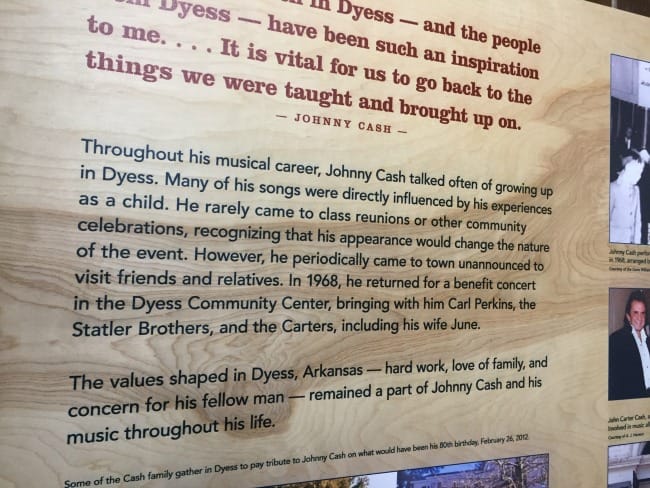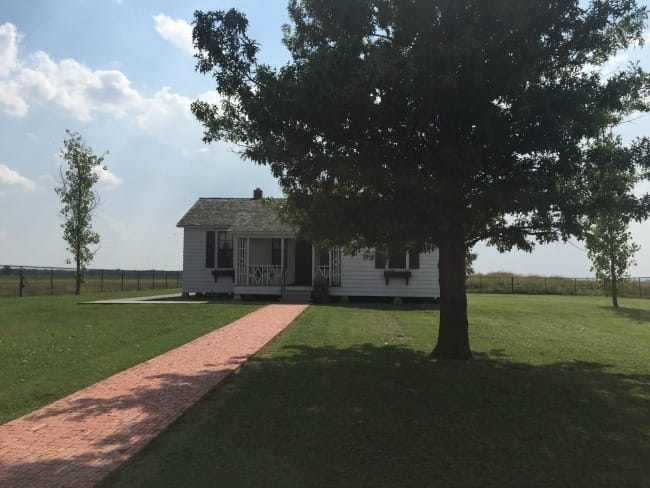

Uh oh...
It appears that you're using a severely outdated version of Safari on Windows. Many features won't work correctly, and functionality can't be guaranteed. Please try viewing this website in Edge, Mozilla, Chrome, or another modern browser. Sorry for any inconvenience this may have caused!
Read More about this safari issue.

The Dyess Colony was formed in the 1930s as part of President Roosevelt’s New Deal. The Great Depression had left many American farm families struggling to survive. The Roosevelt administration’s agricultural relief and rehabilitation program started several farming communities around the country, of which Dyess was the largest.

Families had to meet a multitude of requirements and file lengthy applications to be considered for the program. Once accepted families were relocated to Dyess where they were provided with a basic home and 20 acres of land at no cost. The land, which was once swampy marshland, had been drained and reclaimed as farmland. Participating families had to clear their acreage and begin farming. Their debt was paid through the crops they grew. For most families, this was cotton.

My father-in-law, Billy Joe Anderson, spent a good part of his childhood in the Dyess community. His Aunt “Chicken” lived in a government provided home and farmed in the area. Billy attended the school in Dyess and recalls playing on the playground with a boy named J.R. J.R. is better known to you and me as Johnny Cash.
J.R. was one of Ray Cash’s seven children and the family relocated to Dyess, Arkansas when he was just three after his family was accepted into the colony. By the age of five J.R. was regularly working in the cotton fields where he learned to sing along with his brothers and sisters in order pass the time on the field.

When J.R. entered the Air Force he was not allowed to use his initials and thus began to go by John. When he signed his first record deal in 1955 he took Johnny Cash as his stage name.
Johnny Cash went on to become one of the most influential and successful musicians of all time. He continued his successful music career until late 2003 when he died of complications from diabetes. Many believed he died of a broken heart as the love of his life, June Carter Cash, had passed just four months prior.

Arkansas has always been proud to have Johnny Cash as part of its rich history. Arkansas State University began a project in 2011 to restore parts of the Dyess Colony as well as Johnny Cash’s boyhood home.

Through a series of grants and funding provided through the annual Johnny Cash Music Festival, A-State has been able to restore the Dyess Administration building, the exterior of the Dyess Theatre and Cash’s boyhood home. In May 2016, a state-of-the-art visitors center was opened in the Dyess Colony Circle and includes a selection of memorabilia and a gift shop.
Future plans include adding outbuildings to the Cash home and restoring several other of the remaining homes throughout Dyess. A music festival scheduled for October 2017 is being planned by Cash’s daughter and famed singer herself, Rosanne Cash. The festival concerts will be held on the grounds of the home and will help to provide funding for future restoration projects.

The Dyess Colony Visitors Center and Johnny Cash’s boyhood home are open from 9-3 Monday through Saturday. You can visit their website for more information and to see a timeline of the restoration process.
Please check out my video for a closer look at the brand-new visitor center and for additional information on the Historic Dyess Colony and Johnny Cash Boyhood Home project.
Join the Conversation
Leave a Comment
15 responses to “Historic Dyess Colony Boyhood Home of Johnny Cash”
 Leave a Reply
Leave a Reply
We do the work.
You check your email.
Sign up for our weekly e-news.
Get stories sent straight to your inbox!












 Leave a Reply
Leave a Reply
[…] State University. This year’s celebration comes home to where everything began. Cash lived in Dyess from age three until he graduated from high school and left Arkansas to join the Air Force in […]
[…] Historic Dyess Colony, which has been restored to include the original administration building and the boyhood home of […]
[…] Dyess Colony and Johnny Cash Boyhood Home — Dyess — The Dyess Colony was created in 1934 as part of President Franklin D. Roosevelt’s New Deal to aid in the nation’s economic recovery from the Great Depression. It provided a fresh start for nearly 500 impoverished Arkansas farm families, including the family of music legend Johnny Cash. The colony has been resurrected through the restoration of several historic buildings open to visitors. From the Colony Circle, visitors are shuttled to the Johnny Cash Boyhood Home, less than two miles from the Colony Center. It is furnished as it appeared when the Cash family lived there, based on family memories. […]
[…] may have to start early to get it all covered but head to Dyess first. Dyess is most notable as the boyhood home of Johnny Cash and the Dyess Colony Visitor Center in the town’s old theater along Colony […]
[…] listings that were saved after being included on the list include the Johnny Cash Boyhood Home in Dyess and the Rohwer Japanese-American Relocation Center in Desha […]
[…] close to his brother Jack, who was born third. The Cashes moved from Kingsland, Arkansas to Dyess when J.R. was three years old. Cash spent his childhood working his family’s 20 acres as […]
[…] The Dyess Colony garners a lot of attention, primarily because it was the boyhood home of the legendary musician Johnny Cash. Dyess was a success because most of its residents eventually could pay off the federal loans on their farms and became independent farmers. The colony stopped recruiting families in 1936, although this did not signify the end of the New Deal programs. […]
[…] The Dyess Colony garners a lot of attention, primarily because it was the boyhood home of the legendary musician Johnny Cash. Dyess was a success because most of its residents eventually could pay off the federal loans on their farms and became independent farmers. The colony stopped recruiting families in 1936, although this did not signify the end of the New Deal programs. […]
[…] Historic Dyess Colony – Established in 1934 as part of the New Deal, Dyess was known as “Colonization Project No. 1.” This agricultural resettlement colony has a wagon-wheel design in which a town center stood in the middle surrounded by more than 500 farmsteads of 20-plus-acres, a 3-5-bedroom home, barn and other necessary buildings. Qualifying families relocated to the area from every county in Arkansas. Only a handful of the original homes remain. But restoration continues in the town center to bring back to life a piece of this rich history. […]
[…] Dyess and Johnny Cash’s Boyhood Home […]
[…] Historic Dyess Colony – This site, located in Dyess, preserves the history of the New Deal-era agricultural resettlement community. Visitors can tour the restored boyhood home of music legend Johnny Cash, who grew up in Dyess and visit the museum celebrating the rich history of resettlement communities and Arkansas’s Delta region. […]
[…] we get stuck in the present and the past seems really far away. When you visit the Dyess Colony, you will experience a piece of history and be reminded that a lot can change quickly. This […]
[…] Historic Dyess Colony Boyhood Home of Johnny Cash […]
[…] Cash didn’t just sing—he created poetry with his music. Often influenced by his childhood in Dyess, Arkansas, Cash turned the trials of life during the Great Depression into timeless tunes. His unique mix of […]
[…] back in time to one of America’s largest New Deal agricultural resettlement communities. The Dyess Colony, established in 1934, provided struggling families with a fresh start through cooperative farming. […]